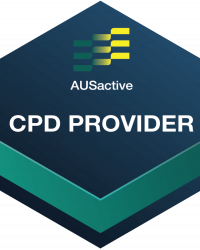Wunda Chair Repertoire
Stability:
Leg Work: Single Leg Press Side
Alternate Names
Standing Side Press, Standing Press Down Side
Derived From
Classical Reformer: Footwork Singles
Primary Element
Stability
To create, develop and connect with the pelvis stabilisation muscles such as gluteus medius and the deep core transversus abdominis, but now working in a different plane of motion to the Single Leg Press Front.
Secondary Element
Strength
To develop and improve hip abduction, working the lifted or front leg away from the midilne of the body using the gluteal muscles, and challenging pelvis stability.
Tertiary Element
–
Repetitions
6-8 each side
Apparatus Setup
Suggested springs
- Exo Chair by Balanced Body
- Cactus style number system
- one spring on setting 2
- Cactus style number system
- Resistance: light
- The pedal position, checking the dowel is secure if working on a split pedal Wunda Chair
- The springs are secure and set to the intended resistance
- Handles or props used to assist balance are secure and their use understood by the client. It’s likely to begin with a Pilates pole will be required for support, or move the Wunda Chair to the end of the Cadillac to use a pole for support
Place foam matting or a pad over the base of the Wunda Chair underneath the pedal to stop the pedal ‘crashing’ loudly onto the base if the client loses control.
Plane of Motion
Frontal
Targeted Muscles
Before moving the limbs, stability can be created using the transversus abdominis and gluteal muscles, in particular gluteus medius and maximus of the supporting or standing leg.
When the lifted or front leg lifts and abducts gluteus medius, minimus and tensor fasciae latae of that lifted or front leg are working to create the abduction movement.
Warnings
Before moving the limbs, stability can be created using the transversus abdominis and gluteal muscles, in particular gluteus medius and maximus of the supporting or standing leg.
When the lifted or front leg lifts and abducts gluteus medius, minimus and tensor fasciae latae of that lifted or front leg are working to create the abduction movement.
Execution
Stand side onto the Wunda Chair with the heels together and the feet in a Pilates V-position. Place the ball of the inside foot onto the pedal, still externally rotated, and slightly forward of the body. The arms can be extended in front, on the hips or behind the head as a challenge. Use the arm position to assist with stability. Lift up through the outside hip and then maintiaing the pelvis position draw the pedal up by bending the inside knee, and press it down to hover just off the base of the Wunda Chair.
The challenge is not to be thrown off balance by the spring setting and to avoid lifting and changing the pelvis position.
Observations
Do a body scan of the client taking note of the following points
- Pelvis
- Are the hip bones even horizontally or is the client leaning towards and biasing the supporting or standing leg side?
- Is the client hitching the hip of the lifted or front leg?
- Legs
- Is the standing knee locked? You’re looking for a soft and straight knee, not dropping inwards and not locked. Have the client bend the knee slightly and reach is out to connect more into gluteal stability muscles
- Move the thigh bone up and down to create the movement of the pedal.
- Feet
- Are the insides of the foot lifting or leaning outward? (supinated)
- Are the insides of the foot rolling inward? (pronated)
- Apparatus
- Is the pedal banging at the bottom? Reduce the spring load so the client can control the springs and reduce the range of motion. Add a foam pad or mat to the base of the chair to soften the noise if necessary.
Learning Style Technique Cues
- Try to maintain alignment of ankle, knee and hip whilst abducted, and move your lifted or front leg without moving your pelvis
- Say the client’s name when you’re about to interact with them
Visual
- Imagine the thigh bones (or femurs) working to reach together and then apart
- You may demonstrate a part of the movement as a visual representation for the client to see
Kinaesthetic
- Keep the heel of the lifted or front leg, lifted
- Lift up the outside hip and lower the inside hip to stay even
- As you draw the lifted or front thigh bone (or femur) upwards, aim to stop before the pelvis needs to move or hitch to accomodate the lifting leg
- Try to match the resistance of the pedal by pressing the lifted or front foot down into the pedal whilst the pedal is lifting as well as when its lowering
Modifications and Variations
You could repeat the exercise on the client’s weaker or less coordinated side a second time.
Regress the exercise by
- Reducing the spring resistance to one spring on setting 1 to connect more into the stability component of the exercise. The client may need a pole or prop for balance to assist, or take the Wunda Chair against the Cadillac end to use a pole as support
- Reduce repetitions and/or pace
- Moving the standing leg back further if the client is tight in their hips
- Turn the foot of the supporting or back leg out so there is more surface area to stand on
Regression Repertoire to work on:
- Mat Side Kick Series
- Reformer Leg Work: Side Splits
Progress the exercise by
- Adding spring resistance as the heavier the spring setting the more the equipment will try to throw you off balance
- Adding repetitions and/or pace and maintaining the same level of stability and control
Progression Repertoire to work towards:
Series and Transitions
This exercise is part of the Leg Press series which also includes Single Leg Press Front and Single Leg Press Crossover.

